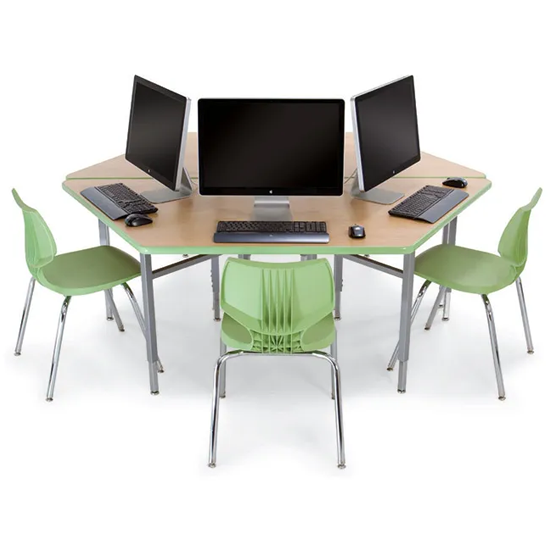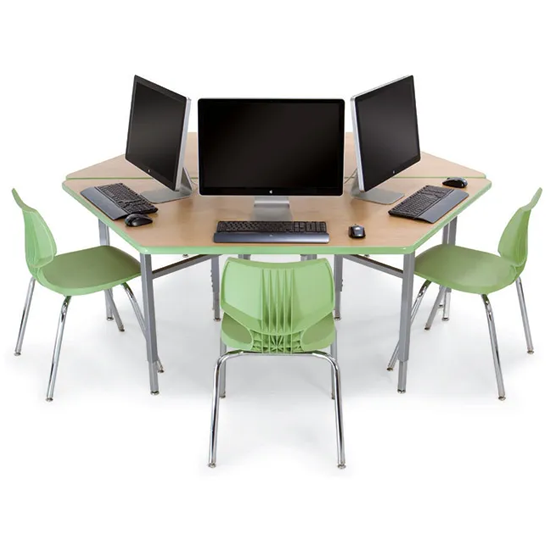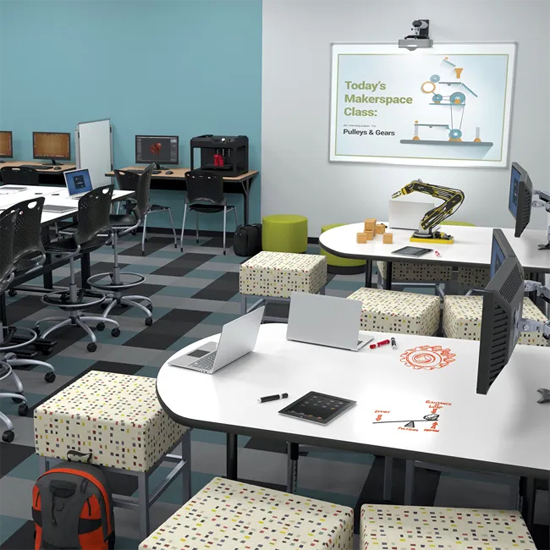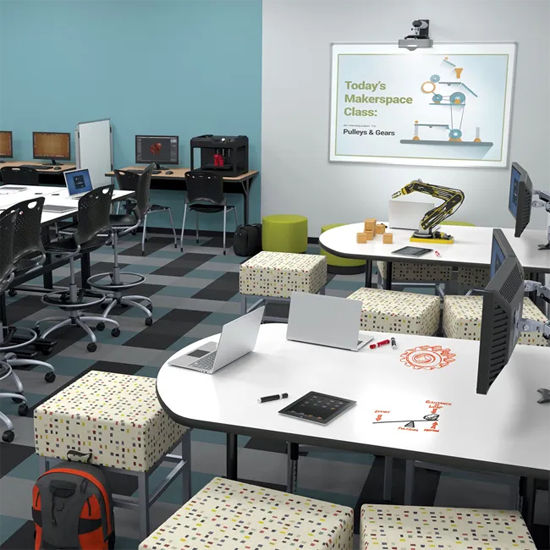As experts in educational, institutional, and commercial furniture, Worthington Direct understands the importance of creating conducive learning environments that foster collaboration and engagement among students. One effective way to achieve this is by arranging school collaborative desks and tables strategically within the classroom.
These desks can be easily adjusted, rotated, and repositioned to accommodate different group sizes and teaching styles. The ability to switch between individual work and collaborative projects allows for a dynamic learning environment that caters to diverse student needs.
Explore these six innovative ways to arrange and utilize collaborative classroom furniture, that will help encourage active participation, teamwork, and a sense of community among your students.
1. Clustered Pods for Group Discussions
Encourage lively discussions and brainstorming sessions by arranging desks in clustered pods. This setup allows students to face each other, promoting eye contact, communication, and the exchange of ideas. By grouping students together, you create an environment conducive to collaborative learning, enhancing social interaction and teamwork.
2. U-Shaped Desk Configuration for Group Projects
Arranging desks into a U-shaped configuration is perfect for facilitating group projects. With desks forming a U-shape, students can easily see and interact with one another, encouraging cooperation and teamwork. This arrangement also provides the teacher with a clear view of all students, facilitating monitoring and guidance during group work.
3. Zoned Desks for Creative Collaboration
Incorporate zoned desks catering to curriculum that encourages creative collaboration and brainstorming among students.


Computer workstations and multimedia tables are a great option where students can come together to collaborate and brainstorm projects involving STEAM activities, the digital arts, or interactive media presentations.


4. Cozy Collaborative Floor Seating
Designate cozy areas within the classroom, furnished with comfortable floor seating positioned around a low collaborative desk or activity table. These spaces serve as retreats where students can engage in reflective discussions, peer editing, or one-on-one mentoring. Such designated spaces offer a relaxed ambiance that encourages open communication and sharing of ideas.
5. Standing Desks for Active Engagement
Introduce standing desks into your collaborative setup to encourage active engagement and movement. Standing desks provide an alternative to traditional seated arrangements, promoting better circulation and increased energy levels.
Students can easily shift between individual and collaborative tasks while remaining physically active.
Stand-up Desks by Luxor
6. Mobile Desks for Enhanced Flexibility
Opt for mobile desks equipped with wheels to maximize flexibility in your classroom. These desks can be effortlessly rearranged to support various teaching methodologies, group sizes, and activity requirements.
Mobile desks enable quick transitions between individual workstations and collaborative spaces, facilitating seamless transitions in the learning process.
Diamond Collaborative Student Desks by Smith System
When arranging collaborative classroom desks, it is essential to consider the learning objectives, teaching style, and the needs of your students. By adopting one or more of these six effective arrangements, you can create an inclusive and collaborative learning environment that empowers your students to thrive. Experiment with these setups, adapt them to your unique classroom, and witness the transformative power of collaborative student tables in promoting active learning and student engagement.
Worthington Direct carries many styles, shapes, colors, and options to fit any budget and to accomodate pretty much any classroom. Want to a create a collaborative space that's unique to your specification requirements but unsure where to start? We're experts at that! Contact us via phone, chat, or email -- let's get started!



















